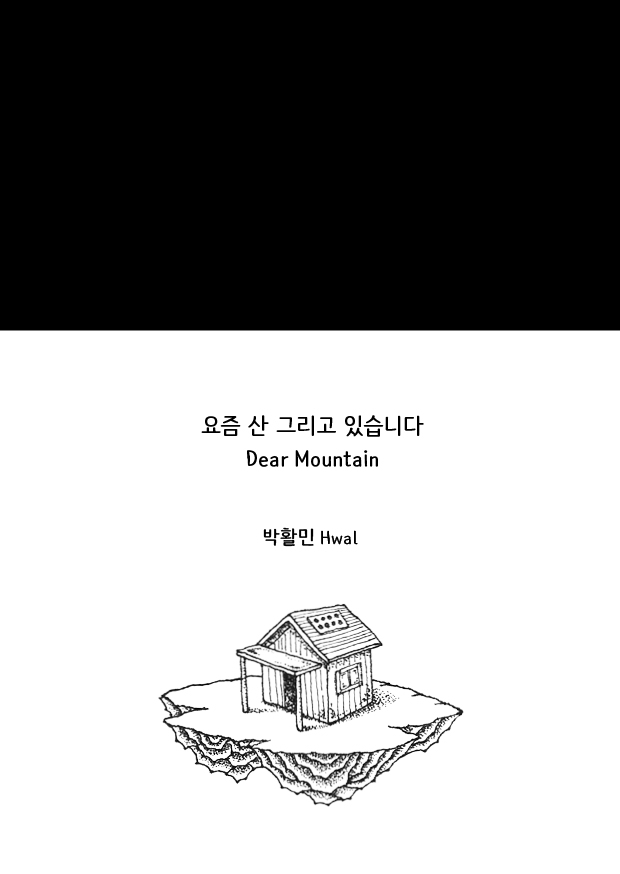‘Life designer, lifestyle adventurer, director of the No Money Economic Center, chieftain of the early days of the shortage of balance, thought collector, rag master, place lessor for the multi-base living lifestyle, daytime planner.’ He creates such strange jobs for himself. He majored in industrial design, but converted to life design after realizing that industry is threatening everyone’s life. How can we save life? What kills life? Where can we start to change life? With these topics in mind, he presents his work on housing issues in the city, self-sufficiency production, living skills, transportation, energy transition, and community spaces. He lives by the motto, “There may be people without money, but there is no one without life. Anyone can start based on the life they already have.”
Authors
Hwal
박활민
다른 사람들
-
A typeface designer and graphic designer who studied Graphic Design at Yeungnam University and Yale University. From 2014 to 2017, he worked as a type researcher and designer at Ahn Graphics’ Typography Institute, where he contributed to the creation of AG Choijeongho Typeface and AG Superblack Gothic. During the same period, he taught typeface design at the PaTI (Paju Typography Institute).
-
Lu Jingren
Prof. Lu Jingren is a book designer and illustrator. During the 1990s, he studied under Prof. Kohei Sugiura (杉浦康平) in Japan. In 1998 he established the Jingren Art Design Studio. He was senior art editor of the China Youth Publishing House. He is now a professor of the Academy of Arts and Design of Tsinghua University and a member of Alliance Graphique Internationale (AGI). Prof. Lu has received many book design awards at home and overseas, including the World’s Most Beautiful Book award … -
Yim Seock-jae
An architectural historian and architect, born in Seoul in 1961. He graduated from the Department of Architecture at Seoul National University, earned a master’s degree from the University of Michigan, and completed a Ph.D. at the University of Pennsylvania with research on French Enlightenment architecture. In 1994, he established the Department of Architecture at Ewha Womans University as its founding professor, where he continues to serve. His extensive and profound research transcends time … -
Ko Bong-seok
He graduated from Hongik University and the Graduate School of Industrial Art. He is a member of the Korean Institute of Brand Design. He is currently the CEO of August Brand. -
Park Sun-a
She studied Library and Information Science in college. She began her career as a feature assistant at Nylon magazine and later worked as an editor at Around magazine and Angraphics. While working in companies, she collaborated with various brands, both large and small. Now, she is active as a freelance editor and art director. She is the author of 20 Kilograms of Life . She dreams of living “in a small house, with broad-minded people, and with a deep heart.” -
Armin Hofmann
Armin Hofmann was a Swiss graphic designer. He was one of the most prominent individuals in Swiss design. He began his career in 1947 as a teacher at the Allgemeine Gewerbeschule Basel School of Art and Crafts at the age of twenty-six. Hofmann followed Emil Ruder as head of the graphic design department at the Schule für Gestaltung Basel (Basel School of Design) and was instrumental in developing the graphic design style known as the Swiss Style. His teaching methods were unorthodox and broad … -
Valentina Vergara
Valentina Vergara is a multidisciplinary designer and illustrator who’s interested in using design as a catalyst for change. She’s collaborated on projects addressing gender disparity in graphic design education and continues to explore ways in which she can dismantle oppressive design thinking and continue to advocate for and uplift marginalized perspectives. -
Han Myoung-sik
Graduated with a degree in Interior Design from the École Municipale des Beaux-Arts Appliqués in Lyon, France, and worked as an interior designer at LG Chem. Currently, teaches and explores architectural spaces with students in the Department of Interior Architecture at Daegu Haany University. -
Yu Hye-young
She graduated from Sookmyung Women’s University in 1994 with a degree in Industrial Design and completed her MFA at Elisaba Design School in 2000. He has exhibited at Sol Ferino , Seoul Design Festival Milan (Milan, 2007), Seoul Design Olympics, Design is Air (Seoul, 2008), Spanish Kitchen at Samji Gallery, Insadong (Seoul, 2009), and Casas Marcs Illustration Group (Barcelona, 2010). Since 2003, he has been a design exhibition commissioner and curator, organizing various exhibitions, and … -
Gwangju Design Center
Gwangju Design Center was established to lead the advancement of the design industry to enhance the competitiveness of local industries and drive regional economic development. Since 2014, it has organized the Gwangju Design Biennale. In 2020, the organization changed its name to Gwangju Institute of Design Promotion (GIDP). -
Amorepacific
Amorepacific Corporation is a South Korean beauty and cosmetics chaebol, operating more than 30 beauty, personal care, and health brands. The firm was founded in 1945 by Sungwhan Suh and currently managed by Kyungbae Suh, the son of the founder. It is the largest cosmetics company in South Korea and one of the 10 largest cosmetics companies in the world. -
Shin Hee-kyoung
Specialized in Visual Design and Design Theory at Seoul National University and its graduate school. As a recipient of the Japanese Ministry of Education scholarship, earned a master’s degree from Musashino Art University and a Ph.D. in Art from the Department of Design at Nihon University. After serving as a researcher at Musashino Art University, currently works as a professor in the Department of Visual Design at Semyung University while actively pursuing art, including two solo exhibitions. …
